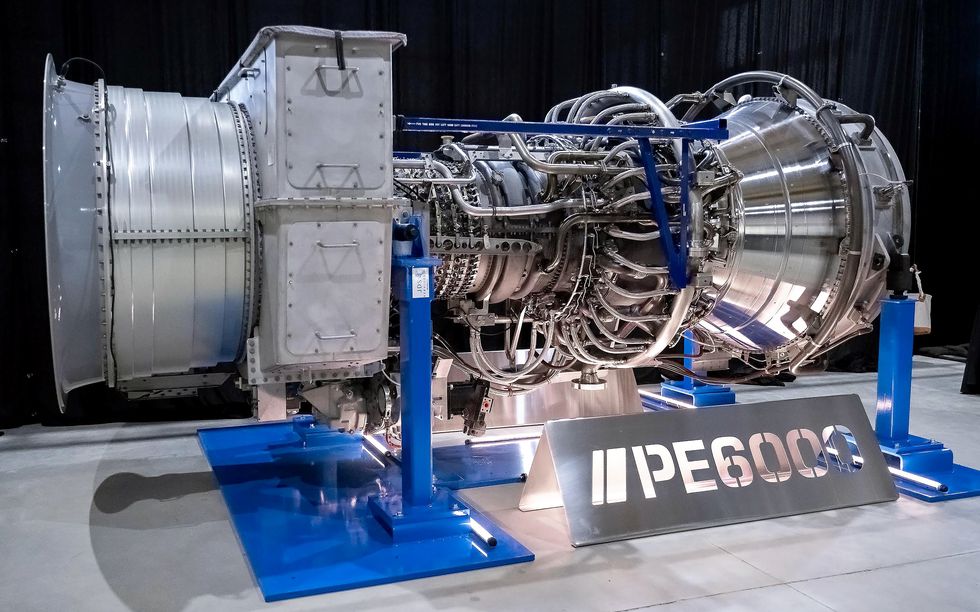Data center developers are facing significant challenges in securing power sources as they expand facilities to leverage the burgeoning potential of generative artificial intelligence. Traditional methods, such as connecting to the grid or establishing onsite power plants, are encountering delays, prompting companies to explore innovative alternatives. At the Data Center World Power conference in San Antonio in October 2025, ProEnergy unveiled a solution: repurposed aviation engines.
Landon Tessmer, Vice President of Commercial Operations at ProEnergy, reported that certain data centers are now utilizing the company’s PE6000 gas turbines to meet power demands during construction and initial operational phases. When grid power becomes accessible, these turbines can either switch to a backup role or contribute to the grid, with some even being sold to local utilities. Tessmer highlighted the success of two projects that have collectively secured 21 gas turbines, providing over 1 gigawatt (GW) of bridging power for five to seven years until grid connections are established.
Revolutionizing Power Generation with Aeroderivative Turbines
The concept of converting aircraft engines for stationary power generation is not new. GE Vernova and Siemens Energy have successfully developed aeroderivative gas turbines, which are lighter and easier to maintain than traditional heavy-frame models. These turbines are based on successful aircraft engines, such as GE’s LM6000, derived from the popular CF6-80C2 turbofan engine, widely used in commercial aviation since its introduction in 1985.
Mark Axford, President of Axford Turbine Consultants, explained that industrializing an aviation engine for power generation involves extensive modifications. The LM6000, for example, required an expanded turbine section and new control systems to convert thrust into shaft power. Additionally, modifications include developing fuel nozzles that allow the turbine to operate on natural gas, as well as emissions-reducing combustors.
With the demand for gas turbines increasing, Paul Browning, CEO of Generative Power Solutions, noted that the supply of these turbines remains inadequate, and the situation is likely to worsen. Customers seeking popular models such as the LM6000 may encounter waiting lists of up to five years, while ProEnergy’s PE6000 offers a much shorter delivery timeline, with units expected to be available by 2027.
Powering the Future with Refurbished Engines
ProEnergy specializes in overhauling retired CF6-80C2 engine cores and pairing them with new parts to create the PE6000. Each refurbished engine can generate 48 megawatts (MW), sufficient to power a small-to-medium-sized data center or serve around 20,000 to 40,000 households. The company anticipates that approximately 1,000 of these aircraft engines will be decommissioned in the coming decade, ensuring a steady supply for conversion.
Data centers often require more than 100 MW, with some of the latest facilities designed for AI demanding over 1 GW. The refurbishment process restores engines to like-new condition, enabling them to operate efficiently for extended periods. ProEnergy’s approach focuses exclusively on the CF6-80C2 to simplify maintenance and engineering.
Originally intended for utility companies needing additional capacity during peak hours, the PE6000 has found a new market among data center operators seeking reliable power sources. These turbines run on natural gas and can be operational within five minutes of startup, with maintenance requiring only 72 hours for a swap with a spare unit. Emissions levels average 2.5 parts per million for nitrogen oxides, well below regulatory thresholds.
The growing popularity of aeroderivative gas turbines can be attributed to several factors. In addition to the surge in data center construction, lengthy wait times for grid connection further fuel demand for these turbines. Tessmer noted that permitting processes can extend delays to eight to ten years. As the need for immediate power solutions becomes increasingly critical, bridging technologies like the PE6000 are poised to play a crucial role in the ongoing expansion of AI infrastructure.
